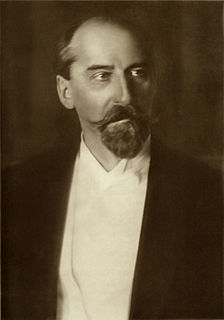
A constitutional convention is a gathering for the purpose of writing a new constitution or revising an existing constitution. Members of a constitutional convention are often, though not necessarily or entirely, elected by popular vote. However, a wholly popularly-elected constitutional convention can also be referred to as a Constituent assembly.
A constituent assembly or constitutional assembly is a body or assembly of popularly elected representatives composed for the purpose of drafting or adopting a constitutional-type document. The constituent assembly is a subset of a constitutional convention elected entirely by popular vote; that is, all constituent assemblies are constitutional conventions, but a constitutional convention is not necessarily a constituent assembly. As the fundamental document constituting a state, a constitution cannot normally be modified or amended by the state's normal legislative procedures; instead a constitutional convention or a constituent assembly, the rules for which are normally laid down in the constitution, must be set up. A constituent assembly is usually set up for its specific purpose, which it carries out in a relatively short time, after which the assembly is dissolved. A constituent assembly is a form of representative democracy.

The Constitution of the Republic of Lithuania defines the legal foundation for all laws passed in the Republic of Lithuania. It was approved in a referendum on 25 October 1992.

The Council of Representatives is the unicameral legislature of the Republic of Iraq. It is currently composed of 329 seats and meets in Baghdad inside the Green Zone.

Bahrain has had two constitutions in its modern history. The first one was promulgated in 1973, and the second one in 2002.
Following Bahrain's independence from the British in 1971, the government of Bahrain embarked on an extended period of political suppression under a 1974 State Security Law shortly after the adoption of the country's first formal Constitution in 1973. Overwhelming objections to state authority resulted in the forced dissolution of the National Assembly by Amir Isa bin Salman Al Khalifa and the suspension of the Constitution until 2001. The State Security Law of 1974 was a law used by the government of Bahrain to crush political unrest from 1974 until 2001. It was during this period that the worst human rights violations and torture were said to have taken place. The State Security Law contained measures permitting the government to arrest and imprison individuals without trial for a period of up to three years for crimes relating to state security. A subsequent Decree to the 1974 Act invoked the establishment of State Security Courts, adding to the conditions conducive to the practice of arbitrary arrest and torture. The deteriorating human rights situation in Bahrain is reported to have reached its height in the mid-1990s when thousands of men, women and children were illegally detained, reports of torture and ill-treatment of detainees were documented, and trials fell short of international standards.
A general election was held in the Philippines on April 7, 1978 for the election of the 165 regional representatives to the Interim Batasang Pambansa. The elections were participated by the leading opposition party, the Lakas ng Bayan (LABAN) which had twenty-one candidates for the Metro Manila area and the leading candidate was the jailed opposition leader Ninoy Aquino while the regime's party known as the Kilusang Bagong Lipunan (KBL) which was led by the then First Lady Imelda Marcos. Ninoy was allowed to run by his fellow party mates in the Liberal Party who boycotted the elections but was not allowed to campaign, so his family campaigned for him. The night before the elections on April 6, 1978, a noise barrage was organized by the supporters of (LABAN) which occurred up to dawn.

The State of Bahrain was the name of Bahrain between 1971 and 2002. On 15 August 1971, Bahrain declared independence and signed a new treaty of friendship with the United Kingdom. Bahrain joined the United Nations and the Arab League later in the year. The oil boom of the 1970s benefited Bahrain greatly, although the subsequent downturn hurt the economy. The country had already begun diversification of its economy and benefited further from Lebanese Civil War in the 1970s and 1980s, when Bahrain replaced Beirut as the Middle East's financial hub after Lebanon's large banking sector was driven out of the country by the war.

The drafting of the Constitution of the United States began on May 25, 1787, when the Constitutional Convention met for the first time with a quorum at the Pennsylvania State House in Philadelphia, Pennsylvania to revise the Articles of Confederation, and ended on September 17, 1787, the day the Constitution drafted by the convention's delegates to replace the Articles was adopted and signed. The ratification process for the Constitution began that day, and ended when the final state, Rhode Island, ratified it on May 29, 1790. In addition to key events during the Constitutional Convention and afterward while the Constitution was before the states for their ratification, this timeline includes important events that occurred during the run-up to the convention and during the nation's transition from government under the Articles of Confederation to government under the Constitution, and concludes with the unique ratification vote of Vermont, which at the time was a sovereign state outside the Union. The time span covered is 5 years, 9 months, from March 25, 1785 to January 10, 1791.

A constitutional referendum was held in France on 5 May 1946. Voters were asked whether they approved of a new draft Constitution proposed by the Constituent Assembly elected in 1945.

The Estonian Constituent Assembly was elected on 5–7 April 1919, called by the Estonian Provisional Government during the Estonian War of Independence. The Assembly was elected by party-list proportional representation in one nationwide district using the D'Hondt method. Eligible voters included soldiers at the front. The elections were won by left-wing and centrist parties.

The Constitution of Tunisia is the supreme law of the Tunisian Republic. The constitution is the framework for the organization of the Tunisian government and for the relationship of the federal government with the governorates, citizens, and all people within Tunisia. Tunisia's first modern constitution was the Fundamental Pact of 1857. This was followed by the Constitution of 1861, which was not replaced until after the departure of French administrators in 1956, by the constitution of 1959. It was adopted on 1 June 1959 and amended in 1999 and 2002, after the Tunisian constitutional referendum of 2002.
The Constitution of the Philippines is the constitution or supreme law of the Republic of the Philippines. Its final draft was completed by the Constitutional Commission on October 12, 1986 and was ratified by a nationwide plebiscite on February 2, 1987.

Constituent Assembly elections were held in Bulgaria between 1 and 30 January 1879, although only 117 of the 231 members of the Assembly were elected during this period. It followed the country's liberation from the Ottoman Empire, and saw the Conservative Party and the Liberal Party emerge as the two main parties. The Assembly was opened on 10 February, and convened in Veliko Tarnovo to ratify the country's first constitution, known as the Tarnovo Constitution, on 16 April. The parliament was later transferred to Sofia, which became the capital of the country.

The current constitution of El Salvador was enacted in 1983 and amended in 2003. The 1983 constitution of El Salvador is similar to that of 1962, often incorporating verbatim passages from the earlier document. The constitution consists of 11 titles, subdivided into 274 articles.

General elections were held in Bahrain for the first time on 12 December 1973. 30 seats out of the 44-seated unicameral National Assembly were contested, the other 14 were ex officio. Of the 24,883 registered voters, 19,509 cast a ballot, giving a voter turnout of 78.4%.
Elections for the Constituent Assembly were held in Denmark on 5 October 1848. Of the 158 seats in the Assembly, 114 were elected and 44 appointed by the King. An additional 31 candidates were to come from the Duchy of Schleswig but were not elected due to the First Schleswig War.

The All Russian Constituent Assembly was a constitutional body convened in Russia after the October Revolution of 1917. It met for 13 hours, from 4 p.m. to 5 a.m., 18–19 January [O.S. 5–6 January] 1918, whereupon it was dissolved by the All-Russian Central Executive Committee, making the Third All-Russian Congress of Soviets the new governing body of Russia.
The Philippine Constitutional Convention of 1971 was called to change the 1935 Constitution of the Philippines. The delegates were elected on November 10, 1970, and the convention itself was convened on June 1, 1971. It was marked by controversies, including efforts to uphold term limits for incumbent President Ferdinand Marcos, and a bribery scandal in which 14 people, including First Lady Imelda Marcos, were accused of bribing delegates to favor the Marcoses.
Elections to a Constituent Assembly were held in Iraq between 24 October 1922 and 25 February 1924, electing the country's first parliament. The Constituent Assembly was elected to draft a constitution, legislate a law for general elections, and ratify the Anglo-Iraqi Treaty of 1922.














